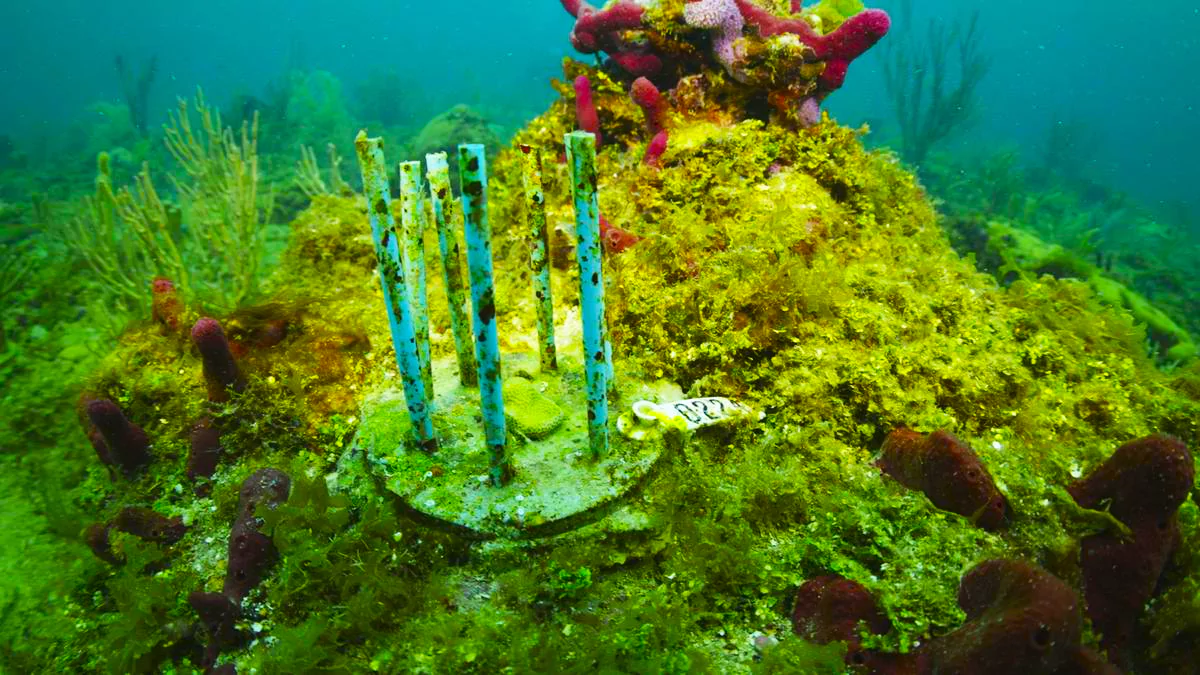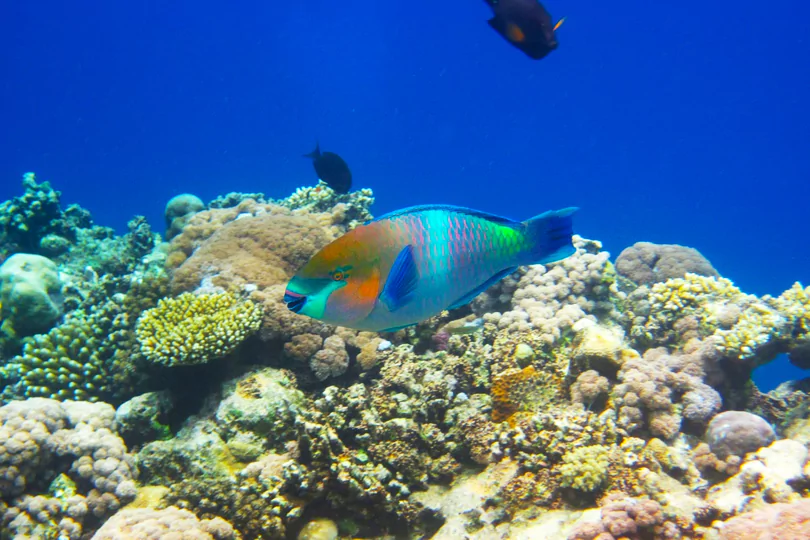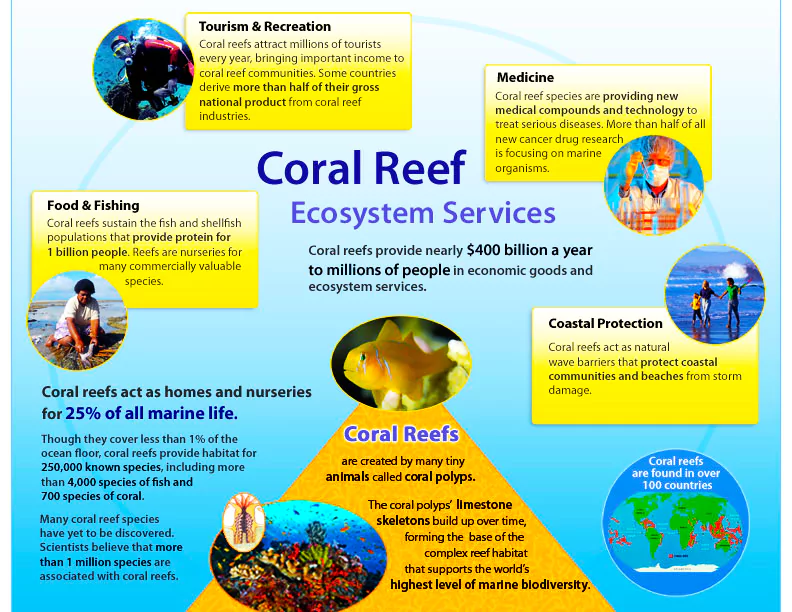Context

Researchers in South Florida are pioneering an innovative approach to safeguarding laboratory-grown coral from predatory fish, utilizing biodegradable materials to aid in coral reef restoration efforts.
Protecting Coral through Coral Fort Initiative
- Marine researcher Kyle Pisano and his partner, Kirk Dotson, have developed the Coral Fort—a biodegradable cage crafted partly from drinking straws—to enhance the survival rate of transplanted coral.
- Predators like parrot fish pose a significant threat to newly transplanted coral, often causing survival rates to plummet below 40%.
Enroll now for UPSC Online Course
Coral Fort – A biodegradable Cage
- The cage comprises a limestone disc encircled by eight vertical drinking straws made from a biodegradable material called polyhydroxyalkanoate ( a biopolymer derived from canola oil).
- These straws, initially designed for boba drinks, provide adequate protection for the coral before harmlessly dissolving in the ocean.
- The Coral Fort, designed to dissolve over time, eliminates the need for maintenance or removal.
- Significance :
- It helps in reducing the labor-intensive process of protecting and maintaining coral.
- This innovative solution not only enhances the survival of transplanted coral but also streamlines restoration efforts crucial for preserving oceanic biodiversity and coastal resilience against natural disasters like hurricanes.
Parrot Fish Relationship with Corals

- Named for their bright colours and beak-like mouths, Parrotfish are large herbivores that graze on the algae growing atop hard corals.
- They digest the algae and excrete the coral as fine sand.
- Coral sand found on our reefs and even helps to form reef islands.
- It’s estimated a single parrotfish could produce up to 90 kilograms of sand each year.
- In the process of feeding on coral polyps, parrotfish may actually help spread the beneficial zooxanthellae algae that corals cultivate.
- This sort of cross-pollination results in more genetically diverse and resilient reefs.
- An even more important benefit of all this chewing on the reef is the removal of light-leaching algae from the surfaces of corals.
|
What are Corals?
- Corals are colonial marine invertebrates of the phylum Cnidaria.
- Polyp: An individual coral is known as a polyp.
- A polyp is a sac-like animal,excretes an exoskeleton near the base.
- Polyps form a symbiotic relationship with plant-like cells called zooxanthellae (unicellular dinoflagellates).
- Symbiotic Relationship: Coral Polyp can ingest tiny organisms called plankton & other small creatures but still majority of their energy and nutrients they get from the zooxanthellae living within their tissues which also is responsible for giving the corals its color. In return corals provide the zooxanthellae with shelter and protection.
About Coral Reefs
- Coral reefs are formed when thousands of polyps living together in a coral colony secretes calcium carbonate exoskeleton beneath it. Over time, the skeletons of many coral colonies add up to build the structure of a coral reef.
- Coral reefs, often referred to as the “rainforest of the sea,” are crucial ecosystems supporting over 25% of marine species. However, the decline of coral populations due to various factors, including rising ocean temperatures, has prompted urgent conservation measures.
Enroll now for UPSC Online Classes
Significance of Coral Reef Ecosystems
- Coral reefs protect coastlines from harsh ocean storms and floods.
- They serve as nurseries, and breeding and feeding grounds for marine wildlife.
- They provide livelihood opportunities through tourism and fishery for coastal communities. According to the National Oceanic and Atmospheric Administration (NOAA), about 500 million people worldwide are dependent on coral reefs for livelihood.

Also Read: Fourth Global Mass Coral Bleaching Event
![]() 16 Apr 2024
16 Apr 2024


